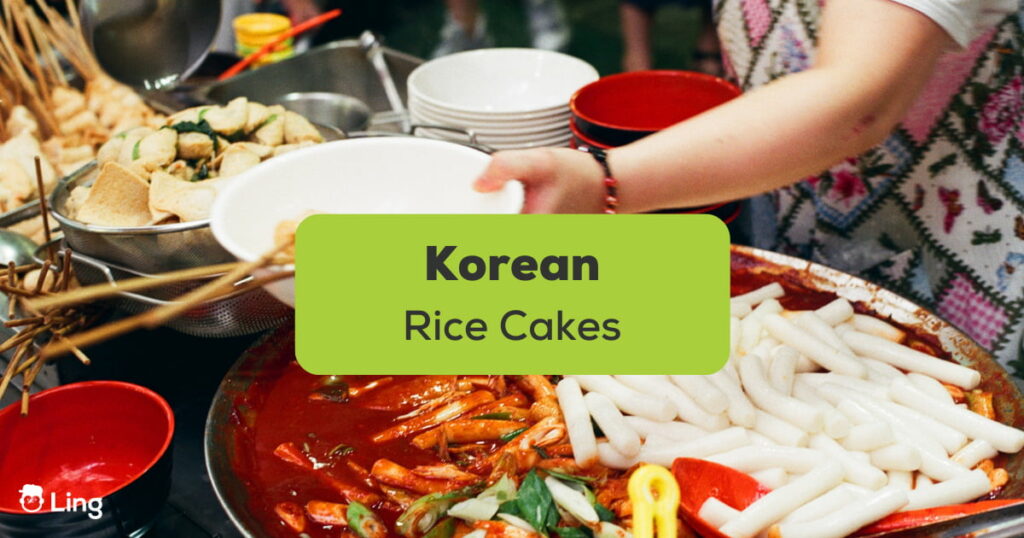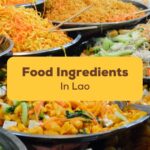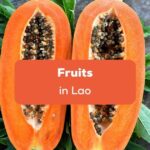Who can resist the delicious Korean street food like tteokbokki? Well, Korean rice cakes 떡 (tteok) is one of the famous K-food so let’s learn more about them!
When it comes to Korean street food like fish cakes and Korean dumplings, you can’t miss out on Korean rice cakes. There’s a wide variety of Korean dishes that use Korean rice cakes. It is usually eaten together with fish cake and other Korean street food. Since it can be easily bought in the streets of South Korea, Korean markets, and other local Asian markets, the popularity 0f this popular Korean street food is undeniable. It is also a popular Korean food that you can usually see in Korean dramas; that’s why today, we will talk about Korean rice cakes.
History Of Korean Rice Cakes
Korean rice cake is an extremely popular Korean street food with a rich history. It is said that the history of Korean rice cakes can be traced back to a primitive agricultural society. Rice cakes date back to prehistoric periods when the coarse powder obtained from the primitive threshing of multigrain was baked without the use of cooking equipment or used to make earthquake dishes.
Today, Rice cakes are used in different kinds of Korean dishes. There are rice cakes that can usually be seen in streets like tteokbokki rice cakes, and there are those that are served in special ceremonies. Whenever you wanna try Korean food, Korean rice cakes should never leave your list.
Top 3 Famous Korean Rice Cake Dishes
With their chewy texture and varieties, rice cakes are surely crave-worthy. This is one of the favorite recipes of every Korean wave fan. Here is a list of the Top 3 famous Korean dishes with rice cakes. These dishes are made with a type of rice cake called garaetteok, which is a rice cake that is cylindrical in shape and made with short-grain rice. Almost the same ingredients but different ways to enjoy!
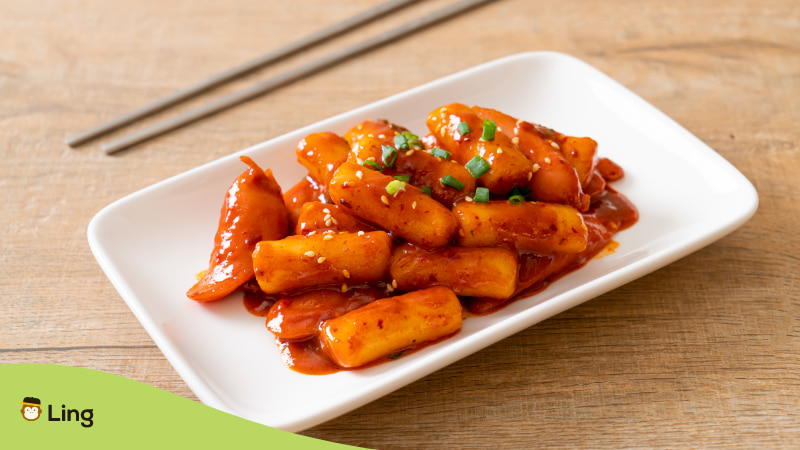
떡볶이 (Tteokbokki)
English Translation: Spicy Korean Rice Cakes
With chewy rice cakes and flavorful sauce, who can resist this OG Korean food? For spicy food lovers, tteokbokki will surely suit your taste. One of Korea’s most popular street food and Korean food is tteokbokki (Korean Spicy Rice Cake). The word tteokbokki translates to a stir-fried rice cake. Korean rice cakes are stir-fried with a sweet and spicy sauce made with spicy Gochujang sauce (fermented Korean chili paste).
Tteokbokki can be served in a variety of ways, and these are great restaurants known for delivering innovative yet delicious tteokbokki. There is also vegan tteokbokki that is perfect for vegans—a healthy and absolutely delicious food.
If you wanna try making your own spicy Korean rice cakes, there’s an easy tteokbokki recipe that you can follow:
Tteokbokki Main Ingredients
- Korean rice cakes – garae-tteok, a long cylinder-shaped rice cakes
- fish cakes
- anchovy stock packet
- green cabbage
- garlic
- scallions
- toasted sesame oil
- sesame seeds.
For the Tteokbokki Sauce
- gochujang (Korean red chili pepper paste)
- soy sauce
- sugar
- gochugaru (Korean chili flakes) – to put extra spiciness to your spicy rice cakes
Korean Cooking Tips And Procedure For Tteokbokki
Now that you have learned the important ingredients to make spicy tteokbokki let us now learn the step-by-step procedure on how to make tteokbokki.
- The first step is soaking the cakes for 20 minutes unless you’re using fresh rice cakes.
- The second step is cutting other ingredients like fish cake, scallions, and cabbage. It should be cut into about 2-inch long pieces.
- The next step involves a cooking technique – to stir fry. Toss the sauce ingredients into the anchovy broth in a large pan (or water), then add rice cakes, and bring the water to a boil.
- Add the rice cakes and cook. Stir it occasionally until the rice cakes are very soft and the sauce thickens about 8–10 minutes.
- Combine the veggies and fish cakes in a large mixing bowl.
- Continue to boil for another 4–6 minutes, stirring regularly. Depending on the rice cakes, extra time may be required to get the ideal amount of softness.
- Feel free to adjust the amount of broth or water as needed.
- To level up your tteokbokki, you can also add fish cakes, ramen noodles, hard-boiled eggs, or cheese.
- If there are leftover tteokbokki, you can make regular Tteokbokki, Gungung Tteokbokki, or Dakgalbi! This is a way of conserving food. You can also reheat leftover tteokbokki if you want to.
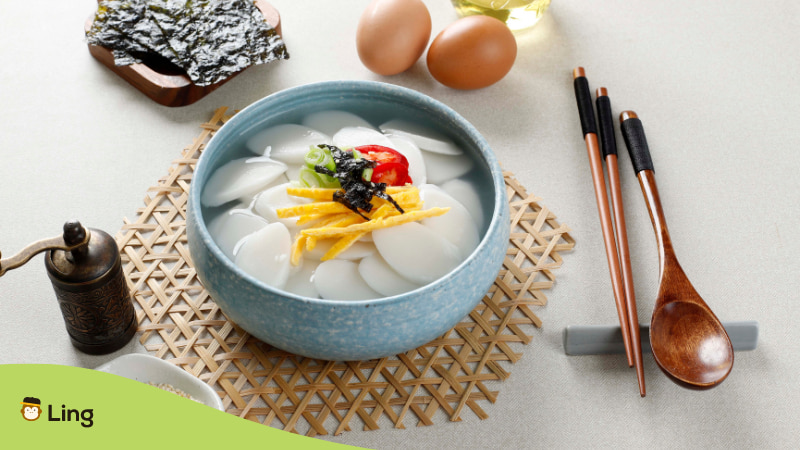
떡국 (Tteokguk)
English Translation: Sliced rice cake soup
For all the soup lovers, here’s a Korean dish that is made of rice cakes that you might like. The broth/soup (guk) is served with thinly sliced rice cakes (tteok). Tteokguk or sliced rice cake soup is a traditional Korean meal served at the Korean New Year’s celebration or Seollal.
This is a really important rice cake dish for Koreans. You might have seen this on K-dramas, especially when the scene is on New Year’s Day. Seolleal is one of the most important celebrations in Korea. Everyone ages one year during this day, and the whole process won’t be completed if you do not eat tteokguk. It is customary to eat tteokguk on New Year’s Day because it is thought to bring good fortune and a year of age to those who consume it.
Here is an easy recipe to make your own tteokguk at home:
Tteokguk Main Ingredients:
- Sliced rice cakes (It can be store-bought or homemade)
- Water (7 cups)
- Pound beef (1/2; preferably brisket or flank steak)
- Garlic cloves (3-4 pcs; minced)
- Dae-pa large green onion (3 pcs)
- Vegetable oil (2 tsp)
- Egg (2 pcs)
- Fish sauce/soup soy sauce (1 tbsp)
- Toasted sesame oil (1 tsp)
- Ground black pepper (1/2 tsp)
- Dried seaweed paper (1 sheet)
- Red pepper
- Salt
Korean Cooking Tips And Procedure For Tteokguk
- Firstly, if the rice cake is frozen, soak them in cold water for about 30 minutes.
- Chop beef into small pieces.
- Wash and slice green onions thinly and diagonally.
- Next is, in a heavy saucepan over high heat, bring the water to a boil, then add the beef and garlic and cook for 5 minutes.
- Use medium-high heat, cover, and simmer for 20 to 25 minutes, or until the beef is soft and the water has infused with flavor.
- Roast a sheet of gim on both sides until it’s bright green and crispy. It should be placed in a plastic bag and crushed by hand. Set aside.
- Separate the yolks and whites of two eggs, placing yolks and whites in different basins. Toss each with a touch of salt and a fork to combine. The stringy chalaza should be removed from the yolks.
- In a heated non-stick pan, pour in the cooking oil. Swirl the oil about until it completely covers the pan, then wipe away the excess with a kitchen towel, leaving a thin oily coating.
- Turn the heat off, then pour the egg yolk mixture into the pan and tilt it to ensure even and thin distribution. Allow it to fry for 1 minute on a hot pan. Remove it from the pan, flip it over, and let it sit for another minute before slicing it into thin strips and setting it aside.
- Add the rice cake slices, fish sauce, and kosher salt to the boiling soup. Using a ladle, stir it together. Cover and cook for 7–8 minutes, or until all of the rice cakes have floated and softened evenly. Cook for 30 seconds after slowly pouring the egg whites into the broth.
- This dish is meant to be served right away. So, serve immediately with kimchi and additional side dishes if desired. The rice cakes will become soggy if you wait too long.
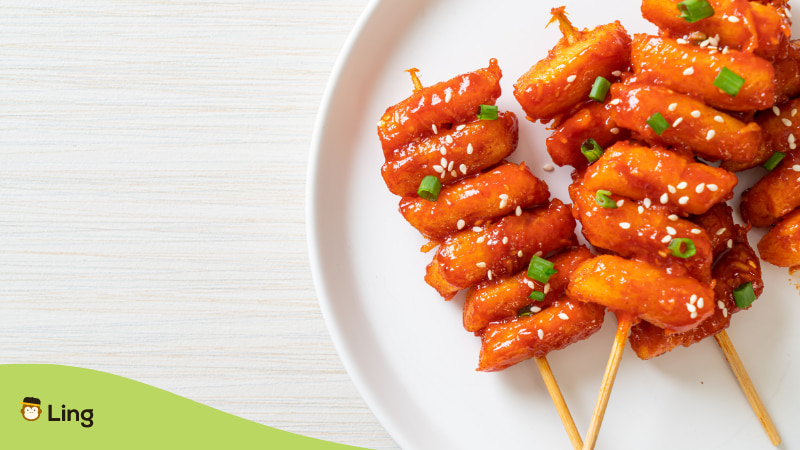
떡꼬치 Tteok-kkochi
English Translation: Rice Cakes Skewer
The next Korean rice cake dish is also one of the most popular and definitely mouthwatering street food. By just its name, you’ll get an idea of what kind of Korean rice cake this is. When it comes to convenience of eating, price, and of course tastiness, rice cake skewer is one to consider. It came from the word tteok (떡 ), which means rice cakes, and kkochi (꼬치), which means for on skewers. This dish is flavorful and easy to prepare.
Tteok-kkochi Main Ingredients:
- Rice cakes
- Gochujang (Korean red pepper paste)
- Gochugaru (Korean red pepper flakes)
- Tomato sauce
- Ketchup
- Soy Sauce
- Garlic
- Sugar
- Sesame oil.
Korean Cooking Tips And Procedure For Tteok-kkochi
- For Tteok skewers: First, if the rice cake is frozen, soak it in warm water for a few minutes until you can easily separate them.
- After that, thread four rice cakes onto each wooden skewer.
- For the Sauce: In a small bowl, mix the following
- 1 tablespoon gochujang
- 1 tablespoon tomato sauce
- 1/2 tablespoon soy sauce
- 1/2 tablespoon sugar
- 1 tablespoon garlic
- 1 tablespoon gochugaru
- 1 tablespoon sesame oil
- Get a frying pan, put oil and melt the butter over a medium heat. Add the rice cake skewers. Put as many as you can fit in the pan.
- Fry the rice cakes in batches for 1-2 minutes on each side, or until lightly golden and crispy. Place on a platter and set aside to coat in sauce.
- Slather each skewer with the sweet gochujang sauce using a basting brush. Serve and eat right away.
- You can also fry it again for extra crispiness, but it’s only optional.
Types Of Korean Rice Cakes
Now that you have learned different rice cake dishes, let us now learn the different types of Korean rice cakes:
Pounded tteok
Shaped tteok
Steamed tteok
Pan-fried tteok
Utensils Used For Korean Rice Cakes
Here are the utensils used for Korean rice cakes:
Best Place To Eat Tteokbokki (Spicy Korean Rice Cakes)
Now that we have learned the different types of rice cakes and dishes, let us now find out where to eat delicious tteokbokki when you’re in South Korea.
Hongdae Jopok Tteokbokki (The gangster’s spicy rice cake)
Hongdae’s famed 20-year-old rice cake shop. This tteokbokki haven has an exciting rumor. According to rumors, an ex-gangster created a tteokbokki truck, which became so popular that he turned it into a restaurant.
Tongin Market
This market has been serving tteokbokki for 30 years. This is the one and the only outlet for original “fried tteokbokki,” located inside the “Tongin grocery market.”
Banjang Tteobokki
This restaurant has something unique to offer. Who would have imagined that black bean sauce suits Korean rice cakes? This is a prominent rice cake restaurant that provides tteokbokki seasoned with Jajang (black bean sauce). Many Korean celebrities have visited this location in Garosugil.
Apple House
For students near the Apple House, you have surely satisfied your tteokbokki cravings because of this store. Apple House, which is located in front of a high school, is more of a snack hangout spot popular with young students. It’s known for its fresh tteokbokki with vegetables and ramyeon noodles, as well as fried dumplings in a sweet-spicy sauce.
Sindangdong Tteokboki Town
What’s the best town for tteokbokki lovers? – Sindangdong Tteokboki Town. It is a community specializing in tteokbokki is located in Dongdaemun, near Sindang station. A tteokbokki lane with a variety of tteokbokki restaurants.

Learning Korean Is One Step Away!
Now that you have learned about one of the favorite street food of Koreans, why not go deeper and learn more? Hallyu or the K-wave has surely brought you here, so learning Korean will really come in handy. Luckily, we have something for you – a language learning app called Ling app.
Ling app is a language learning platform that will help you learn Korean and other languages in a fun and engaging way. Say goodbye to heavy books and dictionaries and enjoy the revolutionized way of learning a language. With the advanced features and well-developed lessons by the expert, you’ll surely achieve your language goals. So, wait no more and start learning Korean with Ling app now.
Don’t know where to go after this post? The best and most productive way to go about your day is to download the Ling app on the Play Store or App Store. You can enjoy all the 200+ lessons filled with exciting games, puzzles, and an AI chatbot to practice Korean with. What are you waiting for? Download the Ling app right away!
